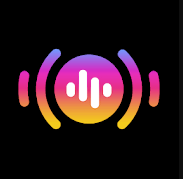
Are you curious about the language spoken by over 100 million people worldwide? Look no further than Urdu! This beautiful and complex language has a rich history, with influences from Arabic, Persian, and Sanskrit. Whether you’re interested in learning the language for personal or professional reasons, understanding its importance can open doors to new opportunities. In this blog post, we’ll dive into everything you need to know about Urdu in page – from where it’s spoken to useful resources for learning it. So let’s get started!
What is Urdu in page?
Urdu is a language known for its poetic beauty and rich history. It originated in northern India during the Mughal Empire, where it was heavily influenced by Persian, Arabic, and Turkish languages.
One of the unique features of Urdu is its use of the Nastaliq script – a combination of the Persian Naskh and Ta’liq scripts. This gives written Urdu a distinct look that sets it apart from other languages.
Urdu in page has also been recognized as one of Pakistan’s official languages since 1947 when Pakistan gained independence from India. In India itself, Hindi-Urdu are considered to be two different versions of the same language.
Despite having similarities with Hindi, Urdu has its own set vocabulary derived from Arabic and Persian which makes it quite distinctive. The grammar structure can be complex at times but learning this fascinating language can open up new doors to understanding literature or communicating with others in South Asia.
There’s so much more to discover about this beautiful language- keep reading!
Where is Urdu spoken?
Urdu is an important language that has a rich history and culture behind it. It is the official language of Pakistan, but it is also spoken in other countries such as India, Afghanistan, and Bangladesh. Urdu has a significant presence in these countries due to their shared cultural heritage.
In Pakistan, Urdu serves as the national language and is widely used for communication purposes among people from different regions and cultures. It holds immense importance in business transactions, education, media, literature, arts and politics.
Apart from Pakistan, there are large communities of Urdu speakers found in India’s northern states like Uttar Pradesh and Delhi where many Muslims reside. In Afghanistan’s northeastern region bordering Pakistan where ethnic Pashtuns live alongside other groups who speak various languages including Persian.
Moreover,in Bangladesh, Urdu can be heard on academic campuses due to close ties with Pakistani institutions.
In addition to this,it also has pockets of speakers living abroad such as the United States,the UK,Saudi Arabia,UAE,Malaysia etc.
Overall,Urdu may not have global reach but its regional influence remains undeniable making it one of South Asia’s most important languages today.
The different dialects of Urdu
Urdu is a language with several dialects that vary depending on the region where it is spoken. The different dialects of Urdu are mainly classified into two categories: Hindustani and Dakhini.
Hindustani Urdu, also known as Khariboli, is the most widely spoken dialect of Urdu in North India. It includes variations found in cities such as Delhi, Lucknow, and Kanpur. This dialect has a distinct vocabulary and grammar structure compared to other forms of Urdu.
On the other hand, Dakhini Urdu is primarily used in South India and Deccan Plateau regions. It incorporates words from languages like Telugu, Kannada, Marathi along with Arabic and Persian vocabulary.
Another form of Urdu includes Rekhta which was an early version of modern-day Hindi-Urdu but over time it has become more associated with traditional poetry than casual speech or everyday conversation.
Urdu speakers can easily recognize these differences since they reflect regional culture and history. Each has its own unique features that make them interesting to learn for any learner who wants to master this beautiful language!
Useful resources for learning Urdu
If you’re interested in learning Urdu, there are plenty of resources available to help you get started. Here are a few useful tools and materials that can assist with your language-learning journey.
1. Online Courses: There are several online courses available for learning Urdu, such as Rosetta Stone or Mango Languages. These courses offer interactive lessons and exercises to help learners develop their speaking, listening, reading, and writing skills.
2. Language Exchange Programs: Websites like iTalki connect language learners with native speakers for one-on-one conversation practice. This is an excellent way to improve your pronunciation and gain confidence when speaking Urdu.
3. Podcasts: Listening to podcasts in Urdu can be an enjoyable way to improve your comprehension skills while also gaining cultural insights into the language’s usage in daily life.
4. Grammar Books: If you prefer traditional studying methods, grammar books like “Urdu Grammar” by Zahoor Ahmed or “Teach Yourself Complete Urdu” by David Matthews can provide a comprehensive overview of the language’s grammatical structure.
By utilizing these resources along with consistent practice and exposure to the language through media like TV shows or music, anyone can learn Urdu effectively over time! Read more…
Conclusion
To sum it up, Urdu is a beautiful language with a rich history and cultural significance. It has its roots in the Indian subcontinent but has spread to other parts of the world as well. Learning Urdu in page can be a rewarding experience for those interested in exploring this fascinating language.
Whether you are looking to learn Urdu for personal or professional reasons, there are plenty of resources available online that can help you get started. From textbooks and courses to online forums and social media groups, there are many ways to immerse yourself in the language and practice your skills.
By taking advantage of these resources and putting in some effort, anyone can learn Urdu and gain an appreciation for its unique beauty. Start exploring all that Urdu has to offer!




